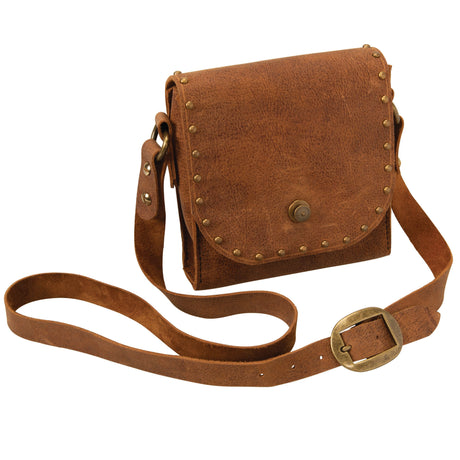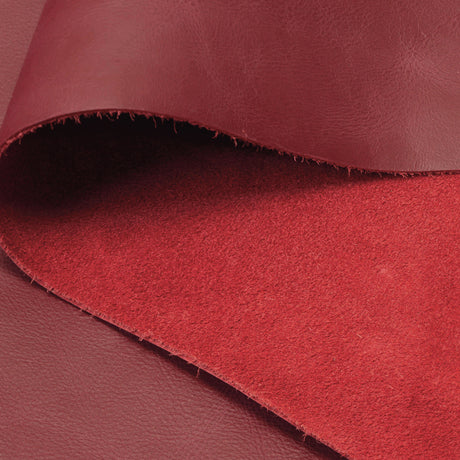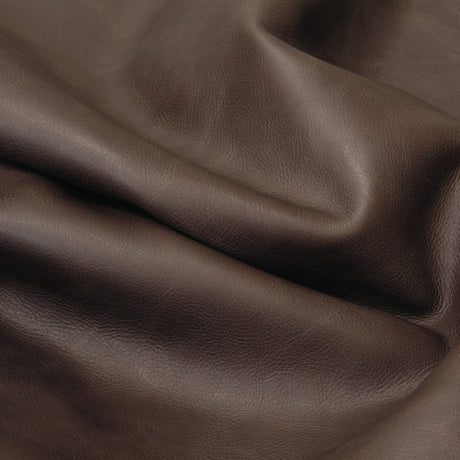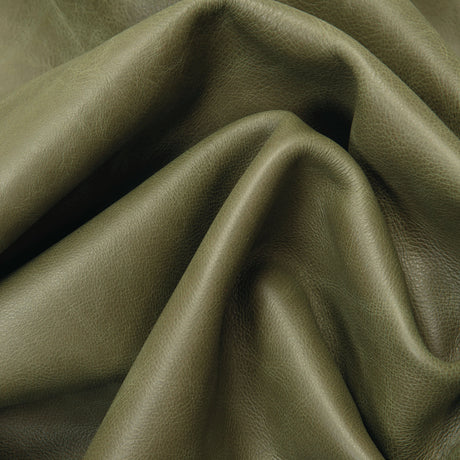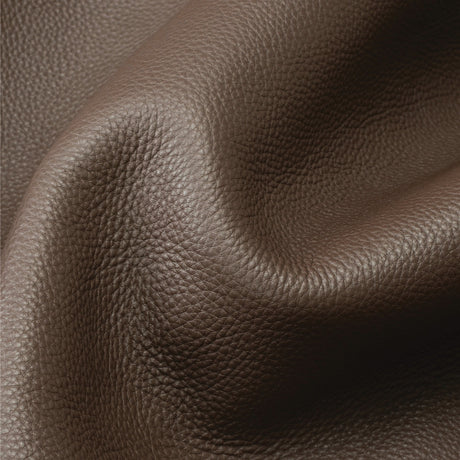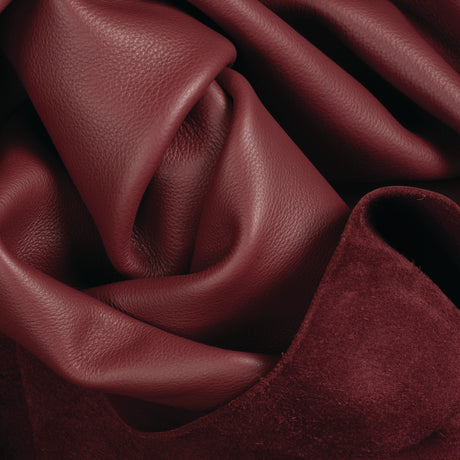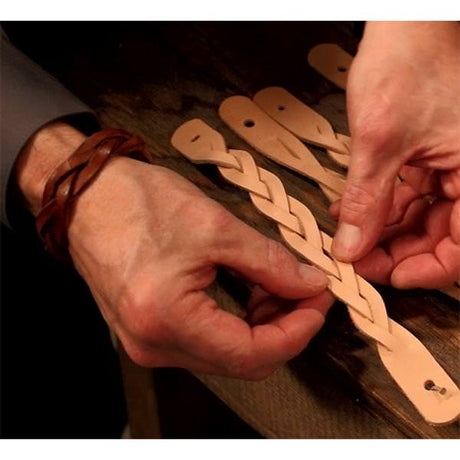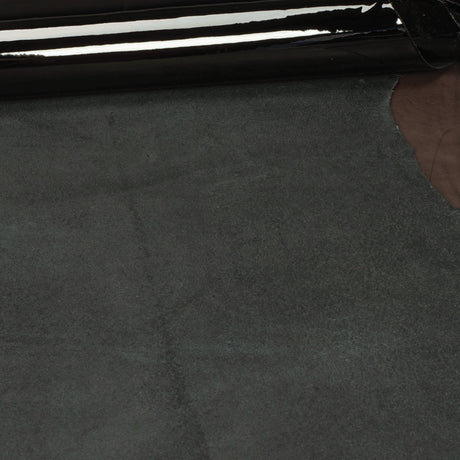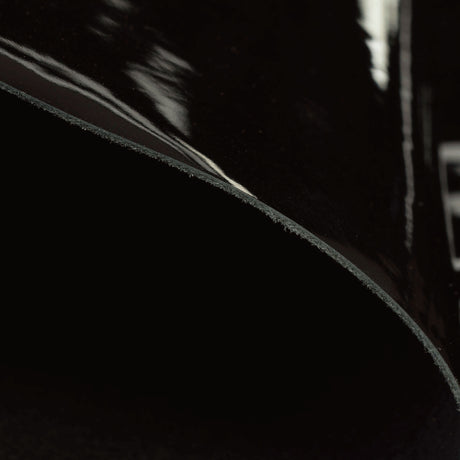Water Buffalo Leather vs Cowhide Leather
About Water Buffalo Leather
Water buffalo leather is one of six types of buffalo leather. The other five types come from the American bison and the African cape buffalo. Please take note that all the buffalo leather from Weaver Leather Supply is water buffalo leather. Sourced from the hides of Asian water buffalo, water buffalo leather is a breathable, thick leather with large pores that make it very moisture absorbent. It's available in a variety of colors and finishes with deep tones that give it a stunning texture. With its distinct grain compared to cowhide, it's a popular choice for consumers and seasoned leatherworkers alike.
Buffalo leather offers the ability to adapt to a range of temperatures, making it especially useful for luxury bags and leather briefcases. Water buffalo leather is both flexible and stylish, durable, and practical, making it an excellent choice for a wide variety of leather projects.
The hides offered by these animals are unique and durable. Water buffalo hide is known for its natural grain and supple texture. Its porous surface and top-notch durability make it popular with the equestrian community, where it is often called memel leather. Riders enjoy the comfortable feel and traction of a water buffalo leather knee block or saddle.
Water buffalo leather is a mainstay in luxury leather goods, including leather wallets, leather tote bags, and leather boots. It's a classic leather option with many uses, especially those that require durability.
Origin
Water buffalo leather is almost exclusively sourced from the Asian water buffalo, which is extremely abundant throughout the Asian continent. In agriculture, its uses include tilling fields and milk production. Asian water buffalo are comfortable in plains and marsh regions.
Asian water buffalo account for 97% of the world's water buffalo population, and therefore provide much of the water buffalo hide we see used in leather goods.
About Cowhide Leather
Cowhide is genuine, unbleached cow hair and skin. It retains the animal's natural coloration. Tanned cow leather is commonly used to make leather shoes, leather jackets, leather wallets, leather purses, leather belts, and much more.
Cowhide leather is far harder and finer than any other leather. It is elastic, stretchy, and in the case of clothing, adapts to the curve of the user's body. It boasts durability, while repelling moisture, and is resilient to heat and sun damage, making it an excellent choice for outerwear.
As one of the highest-quality, most durable, and most sophisticated raw materials available for leatherworking, cowhide leather offers excellent density, flexibility, and strength. It's easy to clean and resistant to mechanical damage, and with careful maintenance and specific treatments, it's capable of retaining its form and look for many years. Cowhide leather is especially well known for its natural patina and genuine vintage luster.
Water Buffalo Leather vs. Cowhide Leather
As one of the six buffalo leather categories, water buffalo leather is unique to cow leather in many of the same ways as the five other types of buffalo leather.
The most obvious difference between buffalo hide leather and cowhide is thickness. While cowhide is thinner and more flexible, tanned buffalo hide is thicker and stronger, while retaining a fair amount of flexibility. In fact, buffalo leather's epidermal layer is up to three times thicker than cowhide, making it incredibly robust and durable.
Both cowhide and water buffalo hide can be found with either eco-friendly vegetable tannage or more economical chrome tannage. Because buffalo skins are not expanded during the tanning process, they are stronger and much more resilient to ripping. Full-grain buffalo leather is some of the toughest leather available.
Compared to cow leather, buffalo leather's grain is more distinct, porous, and pronounced. However, the same quality of full-grain and top-grain in buffalo leather applies to cow leather. Buffalo leather hides are significantly smaller than cow leather, since cowhide is stretched during tanning. Buffalo leather is not stretched to preserve its uniqueness.
There are some potential downsides to buffalo leather hide compared to cowhide as an option for leatherworking projects. Not everyone loves the grainy appearance of buffalo leather, which can sometimes be smoothed down. As in the case of cow leather, regular maintenance is required to keep buffalo leather at its peak quality. Finally, though buffalo leather is water-resistant, it is not completely waterproof.
As for the drawbacks of cowhide, some of the most popular items made of cow leather, such as leather purses and leather wallets, are the most expensive. Like buffalo leather, cow leather needs almost daily attention to preserve its style and texture.
Leatherworking Projects
Water Buffalo Leather vs. Cowhide Leather
Some of the leatherworking projects that buffalo leather is most used for include leather bags, leather belts, leather shoes, and even leather upholstery. In the furniture industry, water buffalo leather is extremely popular due to its lack of markings (resulting from the animal's aquatic habitat), an important quality for leather furniture.
Let's take a closer look at some of the most common leather projects that can be approached using either cowhide or water buffalo hide.
Belts

Belts are one of the most popular and classic items in the world of leatherworking. For the ideal belt, Weaver Leather Supply Leatherworking expert Chuck Dorsett recommends an 8-9 oz., 1/8" inch or 3.3-3.5 mm. belt blank.
- Natural Veg Tanned: Stamping, tooling, dyeing, or leaving it natural are all possibilities. Antique and topcoat are also options.
- Water Buffalo: Stamping is possible, but not recommended. However, all types of decorations and buckles are great options, and no dye is required. Simply cut, add decoration and a buckle.
Mystery Braids
A mystery braid is a fun, remarkably simple project that offers one easy option in both chrome tanned and water buffalo leather.
- 4-5 oz. Chrome Pull-up: Inexpensive option that offers a nice, finished look (can be stamped, dyed, and tooled for a more complex option)
- 4-5 oz. Water Buffalo Leather: Extremely affordable, supple option with body and weight
Purses and Bags

Buffalo Leather's superior elasticity and thickness, as well as its striking texture, with broad, thick fibers, make it a renowned choice for crafting all types of leather bags, including purses and briefcases. The following are Chuck's top recommendations for your leather handbags, leather purses, leather backpacks, leather briefcases, leather duffel bags and more.
- 4-5 oz. Telfair Pebble Grain Supersoft Leather: Beautiful pebble grain finish, pliable, consistent in color and thickness
- 4-5 oz. Water Buffalo Leather: Great for a rustic look
- 8-9 oz. Patent Leather: Top-notch, clean and tight, ideal for a retro look
- 3-4 oz. Lexi Top Grain Leather- A bit of body, a bit more stiff
- 3-4 oz. Pines Milled- A little more rustic with a more supple feel
For a walk-through of these options and more from Chuck, check out this video from our popular series, “The Leather Element.” :
Final Notes
Water buffalo leather, and buffalo leather in general, is a fantastic option for a wide range of leathercrafting projects. This durable leather can both release and retain moisture for breathability.
It adjusts to any temperature, making it pleasant to wear in any season. Indeed, buffalo leather's durability - in particular, its resilience, flexibility, elasticity, and strength - is unmatched. It also carries value and consumer appeal due to its resistance to pressure and burns. Buffalo leather can withstand the harshest conditions, scratches, and many types of damage.
Well, there you go! We hope this article has provided you with some knowledge on the advantages of utilizing water buffalo leather in your leatherworking adventures. We also hope it has helped with sorting through some of the similarities and differences between water buffalo leather and cowhide, and given you some ideas on where to start with incorporating water buffalo hide in your projects!












































































































